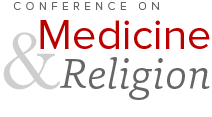Prayer, Holiness and Suffering
Nicholas Shifrar. MA(c), University of Chicago
Much of prayer’s relevance has faded from the modern medical model’s purview and practice. As a spiritual endeavor the power of prayer is not considered to be within the scope of scientific nor medico-epistemological preoccupations and thus loses its ontological credibility to the extent of near extinction. This is a single facet of the broader marginalization of the soul and of spirituality in the march of bio-medicine across American landscapes and timescapes. With concern for ‘the spiritual’ in a postsecular pluralistic society, this paper will import insights, methods, and arguments from an early 20th century European figure of great spiritual force in the Judeo-Christian tradition to elucidate a theory of prayer that is provocative, in the etymological sense of ‘calling forth,’ for modern medical practice. This figure is Simone Weil. This paper is at the intersection of bio- and theological ethics, science and religion, secularized society and communities of holiness.
This paper will first set terms for discussion and debate. What is meant by the ‘march of bio- medicine?’ What are we speaking about when we discuss the epistemological preoccupations of the scientific enterprise? What is prayer and what is holiness?
This paper will examine Simone Weil’s The Needs of the Soul and Gravity and Grace vis-à-vis three examples of prayer that will represent a range from deeply theological language to theo- allegorical language and into secular language. The attempt will be to show how prayer can serve as metonym for the human soul and thus to demonstrate how a turn towards prayer can serve as an existential compass through life’s wild ocean of experience. Through this section, an effort to map prayer’s relevance onto pain and suffering within the medical context will be exerted. The distinction between pain and suffering will be viewed as a meaning-gap that calls for interpretation, which the present medical model is ill-equipped to manage.
This paper will argue that the relation of prayer to suffering is not that of cure nor comfort necessarily but rather it is best understood as life-bestowing and thus holds the capacity to contribute not only to a patient in times of distress but also to the physician-patient encounter and a hospital’s whole ethos and ethics in three ways. The right prayer at the right time is an art of wisdom that can 1) address David H. Rothman’s still-pertinent thesis of “Strangers at the Bedside” 2) contribute to ‘spiritual maps’ that help patients and physicians navigate some of life’s most tumultuous moments and 3) serve as both anchor and illumination for the values a hospital espouses.
Concluding remarks will aim to commemorate, in the etymological sense of ‘call to remembrance,’ key moments in the paper’s arc. It will then seek to open questions for discussion and debate to deepen understandings and kindle curiosities. Medicine does not deal simply with physical damage and pain. The field of medicine interfaces profoundly with points and stretches on arc of a human life. A physiology of soul is as essential to the healing arts as an anatomy of the physical self.
This paper will first set terms for discussion and debate. What is meant by the ‘march of bio- medicine?’ What are we speaking about when we discuss the epistemological preoccupations of the scientific enterprise? What is prayer and what is holiness?
This paper will examine Simone Weil’s The Needs of the Soul and Gravity and Grace vis-à-vis three examples of prayer that will represent a range from deeply theological language to theo- allegorical language and into secular language. The attempt will be to show how prayer can serve as metonym for the human soul and thus to demonstrate how a turn towards prayer can serve as an existential compass through life’s wild ocean of experience. Through this section, an effort to map prayer’s relevance onto pain and suffering within the medical context will be exerted. The distinction between pain and suffering will be viewed as a meaning-gap that calls for interpretation, which the present medical model is ill-equipped to manage.
This paper will argue that the relation of prayer to suffering is not that of cure nor comfort necessarily but rather it is best understood as life-bestowing and thus holds the capacity to contribute not only to a patient in times of distress but also to the physician-patient encounter and a hospital’s whole ethos and ethics in three ways. The right prayer at the right time is an art of wisdom that can 1) address David H. Rothman’s still-pertinent thesis of “Strangers at the Bedside” 2) contribute to ‘spiritual maps’ that help patients and physicians navigate some of life’s most tumultuous moments and 3) serve as both anchor and illumination for the values a hospital espouses.
Concluding remarks will aim to commemorate, in the etymological sense of ‘call to remembrance,’ key moments in the paper’s arc. It will then seek to open questions for discussion and debate to deepen understandings and kindle curiosities. Medicine does not deal simply with physical damage and pain. The field of medicine interfaces profoundly with points and stretches on arc of a human life. A physiology of soul is as essential to the healing arts as an anatomy of the physical self.
